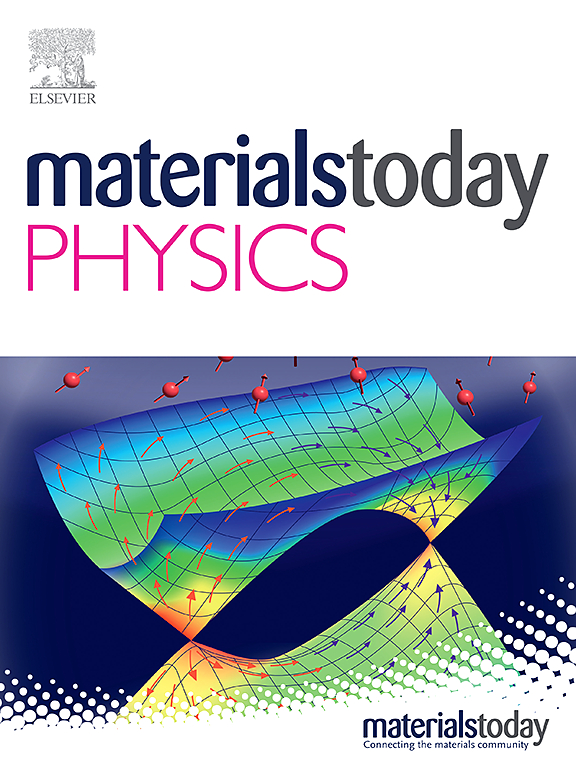Topological fractal multifunctional metamaterial with broadband microwave absorption and hydrophobic characteristics
IF 10
2区 材料科学
Q1 MATERIALS SCIENCE, MULTIDISCIPLINARY
引用次数: 0
Abstract
Developing microwave absorbing metamaterials with broadband absorption and subwavelength thickness holds significant engineering value. To achieve broadband absorption without increasing thickness, we developed a topological fractal-nested honeycomb metamaterial, validated using an arch measurement system over 2–18 GHz. Further simulations based on the finite element method and transmission line theory demonstrate that the topological fractal structure enhances microwave absorption through the dual effects of electric field superposition and directional magnetic coupling. Notably, this directional coupling effect is a novel discovery in cellular metamaterials. The structure simultaneously induces edge diffractions, optimizes impedance, and changes microwave phases, thereby enhancing microwave absorption performance. At 2 mm thickness, the topological fractal-nested honeycomb metamaterial achieves absorption bandwidth of 9.8 GHz for reflection loss (RL) lower than −10 dB, covering almost the whole X and Ku bands. It simultaneously achieves peak radar cross section (RCS) reduction of 16 dBm2 at incidence of 0°, while maintaining RCS below −10 dBm2 across wide angular angles of ±90°. In addition, a hydrophobic surface with a 143° contact angle is prepared by SiO2 nanoparticle spraying. This surface enables self-cleaning while maintaining microwave absorption performance. This work proposes a multifunctional metamaterial design and reveals the intrinsic correlation between structural topology and electromagnetic response.
具有宽带微波吸收和疏水特性的拓扑分形多功能超材料
开发具有宽带吸收和亚波长厚度的微波吸收材料具有重要的工程价值。为了在不增加厚度的情况下实现宽带吸收,我们开发了一种拓扑分形嵌套蜂窝超材料,并使用2-18 GHz的拱形测量系统进行了验证。基于有限元法和传输线理论的进一步仿真表明,拓扑分形结构通过电场叠加和定向磁耦合的双重作用增强了微波吸收。值得注意的是,这种定向耦合效应是细胞超材料中的新发现。该结构同时诱导边缘衍射,优化阻抗,改变微波相位,从而提高微波吸收性能。在2 mm厚度下,拓扑分形嵌套蜂窝超材料的吸收带宽达到9.8 GHz,反射损耗(RL)低于-10 dB,几乎覆盖了整个X和Ku波段的一部分。同时在0°入射角下实现峰值雷达横截面(RCS)减少16 dBm2,同时在±90°宽角下保持RCS低于-10 dBm2。此外,通过SiO2纳米颗粒喷涂制备了143°接触角的疏水表面。这种表面能够自清洁,同时保持微波吸收性能。本工作提出了一种多功能的超材料设计,揭示了结构拓扑与电磁响应之间的内在联系。
本文章由计算机程序翻译,如有差异,请以英文原文为准。
求助全文
约1分钟内获得全文
求助全文
来源期刊

Materials Today Physics
Materials Science-General Materials Science
CiteScore
14.00
自引率
7.80%
发文量
284
审稿时长
15 days
期刊介绍:
Materials Today Physics is a multi-disciplinary journal focused on the physics of materials, encompassing both the physical properties and materials synthesis. Operating at the interface of physics and materials science, this journal covers one of the largest and most dynamic fields within physical science. The forefront research in materials physics is driving advancements in new materials, uncovering new physics, and fostering novel applications at an unprecedented pace.
 求助内容:
求助内容: 应助结果提醒方式:
应助结果提醒方式:


